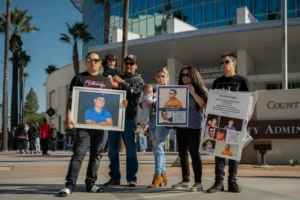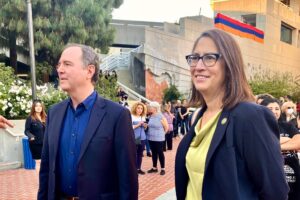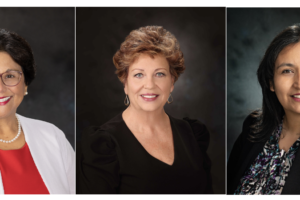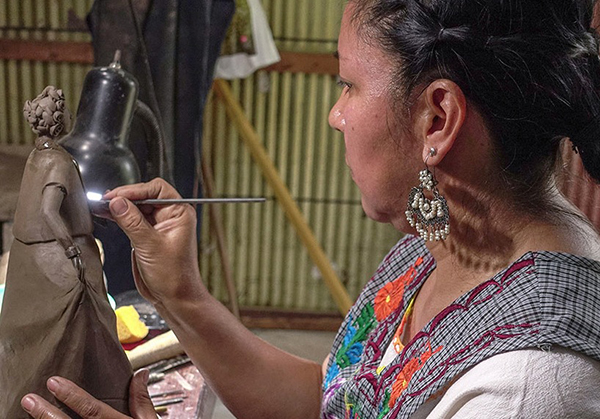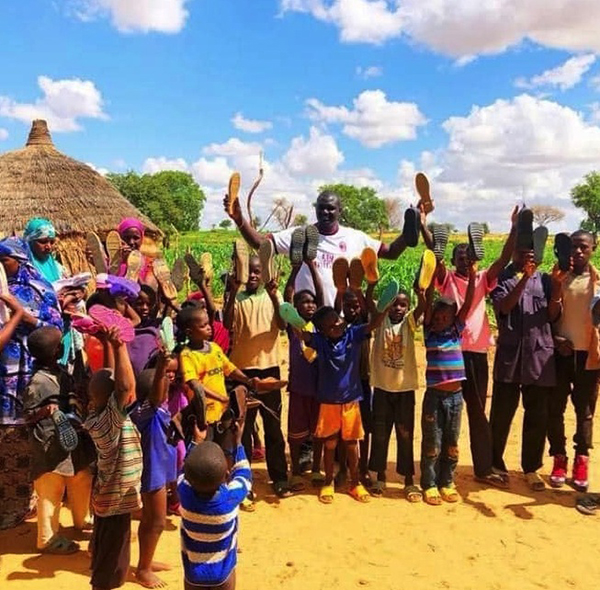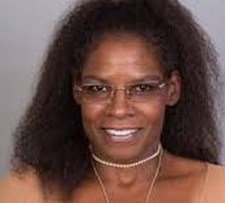MAKING A DIFFERENCE
By Darlene Donloe
Contributing Writer
LOS ANGELES — The art of craft has experienced a resurgence, especially during the pandemic.
Almost overnight, people were caught unawares, stuck at home without the usual diversions of traveling, going to the movies or socializing.
While some people agonized over how to make sense out of the COVID-19 madness, they had more free time to put their hands to good use by starting a craft project.
A great winding down activity during times of stress, crafting is not just a way to pass the time, it’s found to be therapeutic. The more you craft, the more you stimulate certain parts of the brain.
If anyone knows about the power of craft, it’s Carol Sauvion. She’s the creator, director and executive producer of Craft in America, a Los Angeles-based nonprofit with a mission to promote and advance original handcrafted work through programs in all media.
She is also the executive producer of the Peabody Award-winning PBS documentary series “Craft in America,” which explores America’s creative spirit through the language and tradition of the homemade. The series takes viewers on a journey to the artists, origins and techniques of American craft.
“Craft is having a moment right now,” said Sauvion, who did a lot of craftwork in 1992 after the loss of her husband. “I started Craft in America in 1996. I needed a project. I had time on my hands.”
Earlier in her life, Sauvion’s interest in craft manifested through making pots. She would spend sometimes up to 14 hours a day enjoying her craft. She became an artist and started selling her work at craft shows and in galleries, eventually opening Freehand Gallery, a Los Angeles gallery specializing in functional craft.
“People said I wouldn’t have a successful business in L.A. from stuff people don’t know,” said Sauvion, who grew up in Philadelphia and has lived in Los Angeles for 44 years. “They said, ‘people want labels.’ It was quite the opposite.”
Now in its 25th year, Craft in America includes the PBS documentary series, websites, the Craft in America Center, ongoing exhibitions, educational programs and a publication.
The goal of Craft in America, which currently has exhibits at Los Angeles International Airport, is to document the importance of handmade objects and the artists who make them and to provide a gateway to discover, explore and experience craft, and to celebrate the nation’s cultures through craft.
At one time, crafting was flying under the radar. Not for Sauvion, who admitted it quickly became her passion and prompted her to spread the word about its benefits.
“I thought, how can we make it more accessible,” said Sauvion, who studied art history at Manhattanville College and Purchase College in New York. “I thought, let’s put it on television.”
Through a friend at PBS, she got the nod for three episodes.
“In 2006, we started filming,” Sauvion said. “In 2007, it aired nationwide primetime. The first series won a Peabody Award. I hardly knew what the award was. We have very loyal and generous people who continue to support us. We have made 27 hours of programming about craft for PBS.”
Sauvion, 74, said, “All of us have a craft story.”
“Somewhere in your history, there is craft,” she said. “Maybe your sister is doing [do it yourself projects] or your grandmother is doing a quilt. There are ways to heal and learn. It gives you a feeling of independence knowing how to make something.
“It teaches you things and opens up a world and a community for people. It’s not political. It’s a unifying factor.”
Craft in America has extensive knowledge of craft that includes 700 clips, shorts and how-tos, plus information on artists.
“People appreciate the idea of making things themselves,” Sauvion said. “I think that’s why the television show has survived. Watch an episode and the way it’s filmed. You understand how it’s made and how talented and creative the maker is. People love the process.”
There is also a Craft in America Center on West Third Street in Los Angeles, a learning and art space open to the public with exhibitions, a permanent collection, a research library, talks by artists and scholars and workshops.
The center evolved because Sauvion realized having a national program about craft once a year was “not enough.”
“There wasn’t a physical place for people to gather,” she said. “So I said, ‘let’s open a little center.’ We have over 1,000 books on crafts in our library. It’s free and open to the public.”
Emily Zaiden is the director and curator of the Craft In America Center.
She said the main reason people go to the center is to “see a different take on what art can be.”
“The art we show is very much about artists who really work with their material,” she said. “Technically they are masterful for using material for very strong messages. We want everyone to experience those messages and we want everything to be accessible. There is no charge at the center. Watching the series is free.”
Craft in America also has an education program with eight public schools in Los Angeles that are considered underserved. The program is called Craft in Schools. It brings artists and art experiences to hundreds of students in Los Angeles.
“They are learning about an alternative career,” Sauvion said. “Before the pandemic, we would bring the students to the center every semester. We recently did it virtually for a year and a half. They learn about expressing themselves. It takes courage to follow a passion.”
Zaiden, a married, mother of one, said the center has workshops for children and adults. She previously curated an exhibit on ocean ecology and environment issues, and restaurants, and recently opened an exhibition on piñatas.
“It’s perfect timing to do the piñatas,” said Zaiden, who has been with Craft in America since 2010. “The show is a perfect mix of traditional piñatas made to be filled with candy and broken. Some are for political statements. The pieces are meant to be sculptural works of art. Think about the fragile nature of paper for piñatas — it’s a humble material. It’s about how to push the boundaries of what a piñata can mean.”
Zaiden points out that “even piñatas at birthday parties are hand-crafted objects.”
“It’s a craft with so many possibilities,” Zaiden said. “It’s part of our childhood. It has Mexican origins, but it adapts and is widespread. Look at how all these fine artists are really adapting what piñatas signify. It’s about the imagery, the paper — all with new messages about life and our society.
“Think about the art that goes into it and the creativity and skill involved. A piñata is an art object. This is fun and deep and has a lot of layers.”
When Zaiden comes up with ideas for exhibits, she “responds to what’s happening in the world.”
Zaiden said Craft in America likes to do shows with artists who “have been overlooked and haven’t had exposure.”
“Carol likes exhibits from artists of color and women,” she said. “Every show has its own incredible qualities. Carol [Sauvion] is putting craft into everyone’s radar. Now there is an interest.”
Upcoming exhibitions include one on jewelry and one on harmony, both set to air on PBS on Dec. 10.
The Craft in America Center is located at 8415 W. Third St. For more information, call (323) 951-0610 or visit www.craftinamerica.org.
“Making a Difference” is a weekly feature profiling organizations that are serving their communities. To propose a “Making a Difference” profile, send an email to newsroom@wavepublication.com.
Darlene Donloe is a freelance reporter for Wave Newspapers who covers South Los Angeles. She can be reached at ddonloe@gmail.com.




